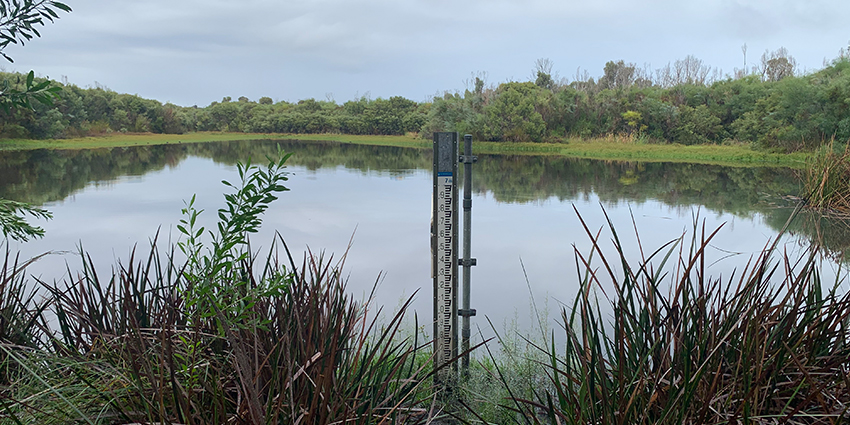This case study relates to Action 26 in the Kep Katitjin – Gabi Kaadadjan Waterwise action plan 3 delivered by the Department of Water and Environmental Regulation.
The climate of Boorloo (Perth) and Bindjareb (Peel) is changing, becoming drier and hotter. Annual rainfall has fallen significantly since the 1970s and Boorloo’s water supply is regarded as one of the most affected by climate change compared to other major cities around the world.
The impacts of a drying climate and projected climate change have been considered in Boorloo’s water management for well over 20 years.
In 2007, Climate Change in Australia used Coupled Model Intercomparison Project phase 3 (CMIP3) global climate models to project climate change across Western Australia. Climate Change in Australia regularly updates the CMIP as knowledge about changing climate develops. CMIP6, the most recent version, was released in 2021.
Water Corporation’s Water Forever: Towards Climate Resilience 50-year plan, released in 2009, used the CMIP3 projections to investigate future long-term declines in Boorloo’s dam inflows and groundwater availability. This enabled the development of a diversified strategy to respond to climate change that included helping the community to reduce water use, increasing recycling of wastewater and developing climate-resilient water sources such as desalination to support Boorloo’s growing community.
The 2009 Gnangara groundwater areas allocation plan responded to declines in winter rainfall and projections that reducing rainfall would drive a significant decrease in streamflow and groundwater recharge. The 2009 Gnangara plan drove reductions in the use of groundwater for Boorloo’s public water supplies and reduced the average amount of groundwater available to Water Corporation in 2013, after the Southern Seawater Desalination Plant was expanded.
In 2015 the Department of Water – now the Department of Water and Environmental Regulation released the Selection of future climate projections for Western Australia guide. Based on a pattern scaling approach, the guide provided a consistent and transparent approach to apply CMIP3 projections for the management of water resources.
The 2015 guide informed the department and Water Corporation’s water supply and demand planning for Boorloo and the 2022 Gnangara groundwater allocation plan. The 2022 Gnangara plan includes the next steps in adapting to the long-term decline in rainfall from climate change. The plan includes further reductions in groundwater use for Boorloo’s public water supplies and, together with projections of further declines in dam inflows, triggered the building of Boorloo’s next seawater desalination plant at Alkimos. The plant is expected to be operational by 2028 and will provide a long-term climate independent drinking water source for Boorloo.
In 2024, the department released a new Guide to climate projections for water management in Western Australia. It provides a practical framework for water planners and decision-makers to use climate change projections in climate impact assessments. The framework links a change in climate features, such as temperature or rainfall, to changes in long-term water availability. The guide recommends using the Bureau of Meteorology’s National Hydrological Projections (2022). The same framework can be applied to new downscaled CMIP6 projections as they become available through the Western Australian Climate Science Initiative in 2025.
Under both the CMIP5 and CMIP6 global climate models, there is high confidence that the future climate for south-west Western Australia will be warmer and drier, meaning Boorloo’s water management will need to continue to actively respond to our changing climate.



